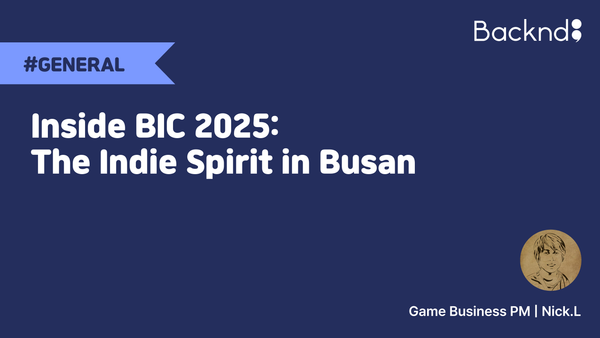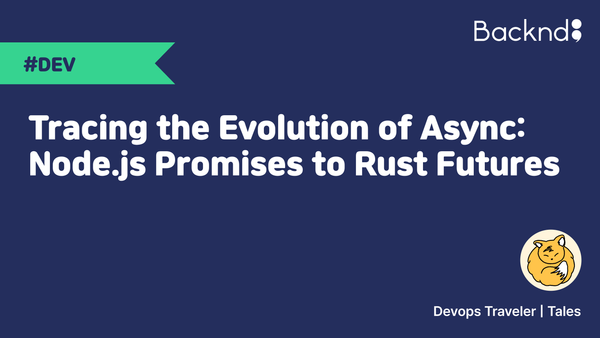Why You Keep Opening That Game: The Hidden Habit Loops in Pikmin Bloom and Cat Snack Bar
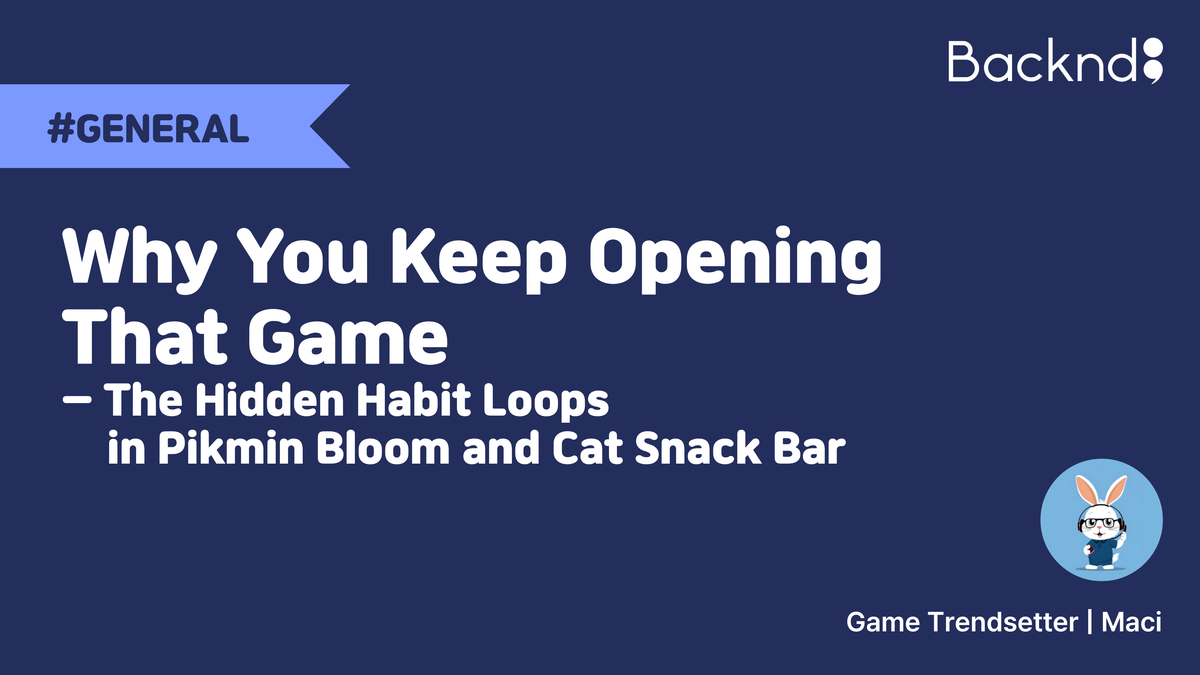
Written by Game Trendsetter Maci, 9 May 2025
Introduction: How Mobile Games Became Daily Habits
"Why did I open this game again today?"
What drives us to play the same game day after day?
At the end of a long day, we instinctively tap on a familiar app icon. For some, it’s Instagram or YouTube. Others might check their calendar or email. And then, there are those who open a newly downloaded game—or an old favorite.
Is it because of a push notification? A daily reward? Or simply out of habit?
This article explores the psychological mechanisms behind why we habitually play games. We'll also look at how two games—Pikmin Bloom and Cat Snack Bar—have implemented those mechanisms in real-world design.
These two games were selected as case studies because of how naturally they fit into daily routines. Pikmin Bloom seamlessly blends with real-world walking habits, while Cat Snack Bar offers short, repeatable sessions and a strong sense of collection and progression. They're also games I personally enjoy—plus, they're widely played, making them representative examples of habit-forming design.
🧩The Habit Loop
Cue → Craving → Response → Reward
The First Psychological Model: James Clear’s Habit Theory (Atomic Habits)
In Atomic Habits, author James Clear outlines a four-stage model for habit formation: Cue → Craving → Response → Reward.
- Cue: A trigger that prompts the habit to begin (e.g., an alarm sound, sitting at your desk)
- Craving: The anticipation of the reward the cue promises (e.g., improved health from exercising, knowledge from reading)
- Response: The actual behavior performed (e.g., exercising, reading)
- Reward: The outcome you gain from the habit (e.g., better health, more knowledge)
This model explains that habits aren't merely formed through repetition, but are reinforced by a psychological mechanism of reward anticipation.
In games, this anticipation loop is intentionally and strategically designed. Because players don’t always know when or what rewards they’ll receive, they are encouraged to return more frequently and consistently.
(Reference: Atomic Habits summary)
We can see this model at work in many games we play today. Below are both general applications in gaming and specific breakdowns for Pikmin Bloom and Cat Snack Bar.
✔ How It Applies to Games (General Case)
- Cue: Login reminders, event notifications
- Craving: Desire for rewards, sense of achievement
- Response: Logging in, participating in events or quests
- Reward: Gaining items, leveling up, becoming a top-ranked player
🎮 Pikmin Bloom – Habit Loop Breakdown
- Cue: Step count notifications, flower planting prompts
- Craving: Growing Pikmin, collecting new Pikmin types
- Response: Walking, launching the app, planting flowers
- Reward: Evolved Pikmin, a completed flower map, harvest bonuses
🎮 Cat Snack Bar – Habit Loop Breakdown
- Cue: Push notifications, daily check-in rewards
- Craving: Unlocking new cats, upgrading your restaurant
- Response: Serving food, placing cats, interacting with customers
- Reward: Gold earnings, feature unlocks, charming animations
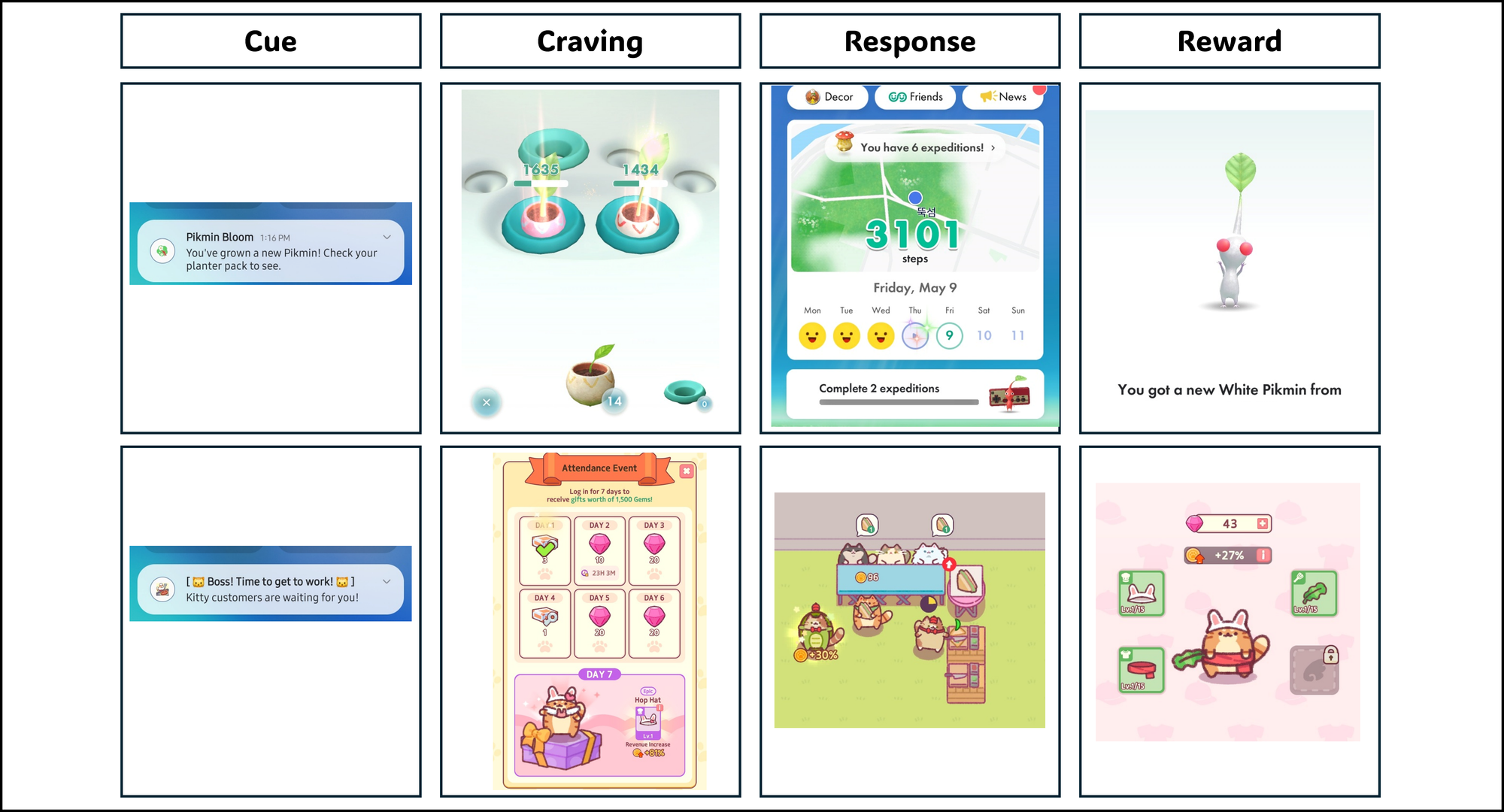
🔁 The Hooked Model
Trigger → Action → Variable Reward → Investment
The Second Psychological Model: Nir Eyal’s Hooked Model
Nir Eyal's book 'Hooked: How to Build Habit-Forming Products,' explains how products can be designed to drive repeated user behavior. This model structures how products influence user actions and psychological motivations to form habits over time.
It consists of four stages: Trigger → Action → Variable Reward → Investment
Among these, what sets this model apart is the final stage 'Investment.'
This is where the user begins to commit time, effort, and data to the product - leveling up characters, collecting rewards, or building a community. These investments increase the likelihood of future engagement. Unlike Atomic Habits, this stage explains how products achieve user lock-in through emotional and resource-based commitment.
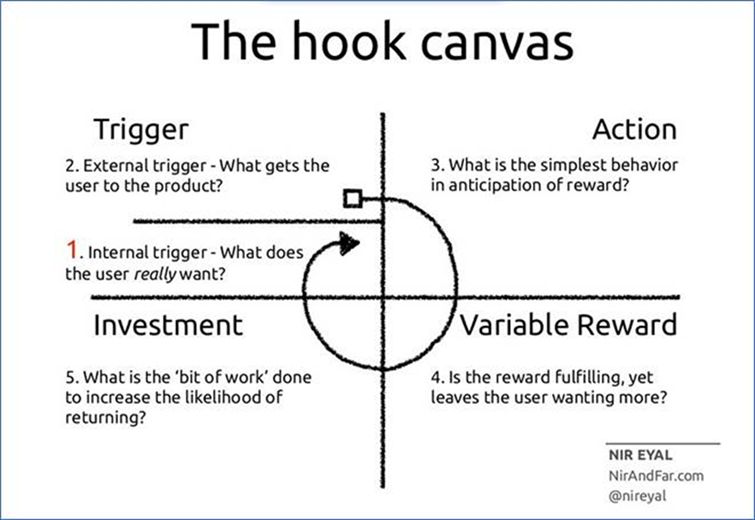
- Trigger – Internal and external cues that spark the behavior
- Internal: boredom, loneliness, FOMO
- External: push notifications, messages
- Action
- The simplest behavior in anticipation of a reward (e.g., opening an app, tapping a like button)
- Variable Reward
- An unpredictable and compelling reward (e.g., loot boxes, algorithm-surfaced content, surprise food deliveries)
- Investment
- Users invest time, data, or effort that makes them more likely to return (e.g., uploading content, subscribing, inviting friends)
(Reference:The Hook Model, Building habit-forming products)
I’ve recently caught myself watching endless Shorts on YouTube or Instagram. Even without intending to, I end up scrolling for far longer than planned. Here's how that fits into the Hooked model.
✔ Real-World Example: YouTube Shorts
- Internal Trigger: boredom, looking for distraction
- External Trigger: app notifications, likes, video suggestions
- Action: opening YouTube and tapping a video
- Variable Reward: unpredictable short-form video content served by algorithm
- Investment: increased watch time, subscriptions, uploading content
Now let’s break down how the same Hooked model applies to Pikmin Bloom and Cat Snack Bar, just like we did with Atomic Habits earlier.
✔General Application in Games
- Internal Trigger: boredom, commuting on the subway
- External Trigger: login rewards, push notifications
- Action: simple login, accepting a quest
- Variable Reward: enhancement chances, gacha results, random item drops
- Investment: accumulated progress, skin collection, time spent
🎮 Pikmin Bloom – Hooked Model Breakdown
- Internal Trigger: desire to make daily walks more fun
- External Trigger: Pikmin growth alerts, friend activity updates
- Action: walking, opening the app
- Variable Reward: excitement of discovering which Pikmin you get
- Investment: completing collection logs, filling out the flower map
🎮 Cat Snack Bar– Habit Loop Breakdown
- Internal Trigger: boredom, love for cats
- External Trigger: daily login alerts, event notifications
- Action: repeating sessions, upgrading facilities
- Variable Reward: surprise boxes, animated cat behaviors, unlocking cuter cats
- Investment: expanding restaurants, collecting outfits, accumulating time, in-app purchases
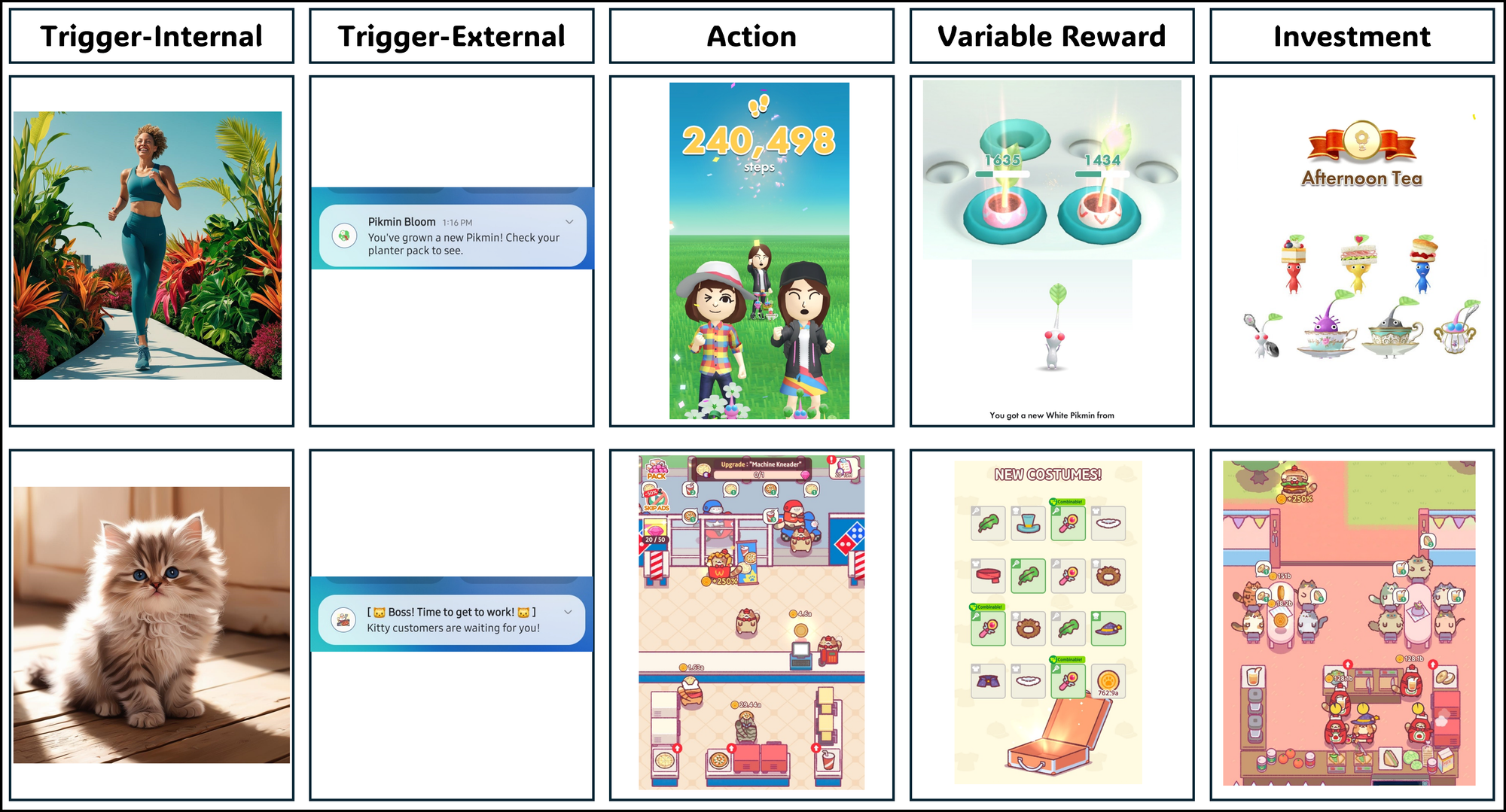
🧠 Summary: Why Games Can be Designed as Habits
Through these two psychological models, we’ve seen how games go beyond entertainment—they become systems that shape user behavior.
- James Clear helps us understand "why" habits repeat.
- Nir Eyal explains "how" products are intentionally designed to make habits repeat.
Together, they illuminate the invisible blueprint behind why you open that game again today. Games are no longer just play—they’re behavioral systems. And these two models are "the hidden design docs" behind them.
🛠 Suggestions for Game Designers and Developers
- Integrating habit theory from the early planning stages can help you design more successful games.
Understand how repetitive behavior works, and create a user journey that makes people want to come back. Consider the psychological triggers that make a player open your game. - Small habit-forming features—like Daily login bonuses, Push notifications, Repeatable Quests, and Login checks—are now core content that drives player "Retention".
If you’re short on time or resources, visit www.backnd.com.
Backend core features like these are already built into BACKND, a Ready-made game backend solution. Use it to skip the tedious system work and focus on what truly matters: Crafting core gameplay and growth loops.
BACKND helps make game habit design faster, smoother, and more effective.
🔎 References
- James Clear, 『Atomic Habits』
- Nir Eyal, 『Hooked』
- Pikmin Bloom: https://pikminbloom.com/
- Cat Snack Bar: Google Play

© 2025 AFI, INC. All Rights Reserved. All Pictures cannot be copied without permission.

![[External Essay] Gamescom 2025 Interactions](/content/images/size/w600/2025/09/------1.png)
